
Dhaulagiri, located in Nepal, is the seventh highest mountain in the world at 8,167 metres (26,795 ft) above sea level, and the highest mountain within the borders of a single country. It was first climbed on 13 May 1960 by a Swiss-Austrian-Nepali expedition. Annapurna I is 34 km (21 mi) east of Dhaulagiri. The Kali Gandaki River flows between the two in the Kaligandaki Gorge, said to be the world's deepest. The town of Pokhara is south of the Annapurnas, an important regional center and the gateway for climbers and trekkers visiting both ranges as well as a tourist destination in its own right.
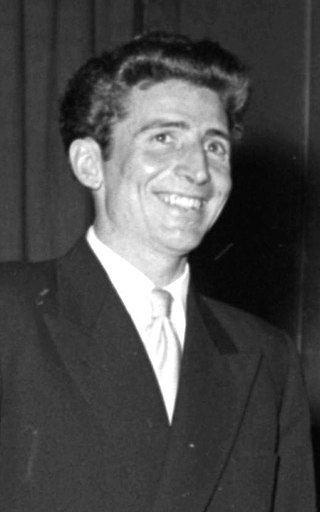
Hermann Buhl was an Austrian mountaineer. His accomplishments include the first ascents of Nanga Parbat in 1953 and Broad Peak in 1957.
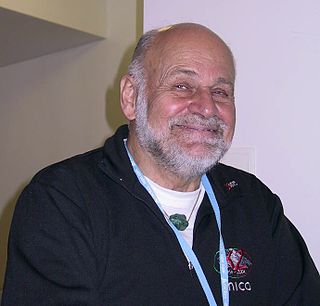
Kurt Diemberger is an Austrian mountaineer and author of several books. He is the only living person who has made the first ascents on two mountains over 8,000 metres: of Broad Peak in 1957 and of Dhaulagiri in 1960. In 2013, he won the Piolet d'Or Lifetime Achievement Award.

Chogolisa is a trapezoidal mountain located in the Karakoram range within the Gilgit-Baltistan region of Pakistan. It is situated near the Baltoro Glacier in the Concordia region, which is renowned for hosting some of the world's tallest peaks.
Peter Boardman was an English mountaineer and author. He is best known for a series of bold and lightweight expeditions to the Himalayas, often in partnership with Joe Tasker, and for his contribution to mountain literature. Boardman and Tasker died on the North East Ridge of Mount Everest in 1982. The Boardman Tasker Prize for Mountain Literature was established in their memory.

George Eric Newby was an English travel writer. His works include A Short Walk in the Hindu Kush, The Last Grain Race and A Small Place in Italy.

Noshaq, also called Noshakh or Nowshakh, is the second highest peak in the Hindu Kush Range after Tirich Mir at 7,492 m (24,580 ft). It lies on the border between Afghanistan and Pakistan. The north and west sides of the mountain are in Afghanistan whereas the south and eastern sides are in Pakistan. Noshaq is Afghanistan's highest mountain and is located in the northeastern corner of the country along the border with Pakistan. It is the westernmost 7,000 m (22,966 ft) peak in the world. Easiest access to Noshaq is from Wakhan Afghanistan.

Alan Hinkes OBE is an English Himalayan high-altitude mountaineer from Northallerton in North Yorkshire. He is the first British mountaineer to claim all 14 Himalayan eight-thousanders, a feat he completed on 30 May 2005.
Alan Paul Rouse was the first British climber to reach the summit of the second highest mountain in the world, K2, but died on the descent.
Istor-o-Nal is the third highest mountain in the Hindu Kush, in the Chitral District of the North-West Frontier Province of Pakistan. It is the 68th highest independent peak in the world. It crowns a massif with eleven peaks of elevation more than 7,000 m (22,966 ft). The peak is located a few kilometres northeast of Tirich Mir, across the Tirich Glacier. Because Istor-o-Nal is behind the higher peak of Tirich Mir from many viewpoints, it is not easily visible and therefore not well known.
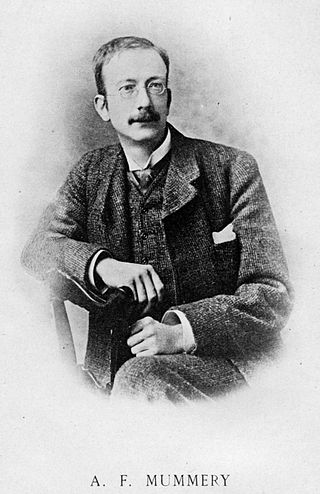
Albert Frederick Mummery, was an English mountaineer and author. Although most notable for his many and varied first ascents put up in the Alps, Mummery, along with J. Norman Collie, Geoffrey Hastings, and two Gurkhas are also the first men in recorded history to have attempted to summit one of the Himalayan eight-thousanders.

Elizabeth Hawley was an American journalist, author, and chronicler of Himalayan mountaineering expeditions. Hawley's The Himalayan Database became the unofficial record for climbs in the Nepalese Himalaya. She was also the honorary consul in Nepal for New Zealand.
Wojciech Kurtyka is a Polish mountaineer and rock climber, one of the pioneers of the alpine style of climbing the biggest walls in the Greater Ranges. He lived in Wrocław up to 1974 when he moved to Kraków. He graduated as engineer in electronics. In 1985 he climbed the "Shining Wall," the west face of Gasherbrum IV, which Climbing magazine declared to be the greatest achievement of mountaineering in the twentieth century. In 2016, he received the Piolet d'Or for lifetime achievement in mountaineering.

Dinas Cromlech or Dinas y Gromlech is a distinctive rhyolite rock outcrop at the Llanberis Pass, in Snowdonia, northwest Wales, which has a distinctive "open book" shape that is clearly visible from the road (A4086), and is very popular location for rock climbers and contains some of Britain's most famous and notable rock climbing routes, several of which are important in the history of rock climbing.

A Short Walk in the Hindu Kush is a 1958 book by the English travel writer Eric Newby. It is an autobiographical account of his adventures in the Hindu Kush, around the Nuristan mountains of Afghanistan, ostensibly to make the first mountaineering ascent of Mir Samir. Critics have found it comic, intensely English, and understated. It has sold over 500,000 copies in paperback.
Hugh Michael CarlessCMG was a British diplomat, philanthropist and explorer who served in Her Majesty's Diplomatic Service from 1950 to 1985. He is best known for the exploration of Nuristan and the Panjshir Valley along with his friend Eric Newby, which was the subject of Newby's humorous travel book A Short Walk in the Hindu Kush (1958).
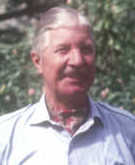
Lieutenant-Colonel Harry Reginald Antony Streather was a British Army officer who served in the Gloucestershire Regiment, and mountaineer who first-ascended the third-highest mountain in the world, on the 1955 British Kangchenjunga expedition, and Tirich Mir. Streather was the first man ever to climb two peaks above 25,000 feet (7,600 m).
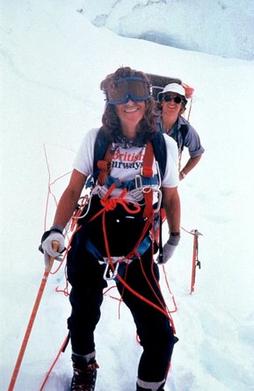
Alison Chadwick-Onyszkiewicz was a British mountaineer, painter, and lithography lecturer. She made the first ascent of Gasherbrum III, at the time the highest unclimbed mountain in the world. Chadwick-Onyszkiewicz died along with her climbing partner, Vera Watson, during an attempt on Annapurna I Central.
Karl Maria Herrligkoffer was a German medical doctor, who from 1953 and 1986, organized and directed numerous German and Austrian mountaineering expeditions including 13 expeditions to five of the world's highest peaks in the Himalayas and the Karakoram. There were some notable successes on these expeditions including the first ascent of Nanga Parbat (8126m), and also the second and third ascent of that mountain, the successful ascent of Everest (8849m) by 15 people from one expedition, the first ascent of the South Ridge of K2 (8611m), the first attempt on Broad Peak (8051m), and the first ascent of about 35 peaks during two expeditions to east Greenland.
Takeo "Kenro" Nakajima was a Japanese elite alpinist and cameraman who won three Piolet d'Or awards, considered to be the highest achievement in mountaineering. In 2018, Nakajima and his climbing partner Kazuya Hiraide received the 26th Piolet d'Or for their ascent of the unclimbed northeast face of Shispare, which they climbed in 2017. In 2020, the pair won their second Piolet d'Or for their ascent of Rakaposhi. They would win their final posthumous Piolet in 2024. Nakajima summitted six of the Seven Summits and three eight-thousanders: Cho Oyu, Manaslu, and Mount Everest. He was known for making first ascents on other remote peaks across the Himalayas and the Karokoram.















